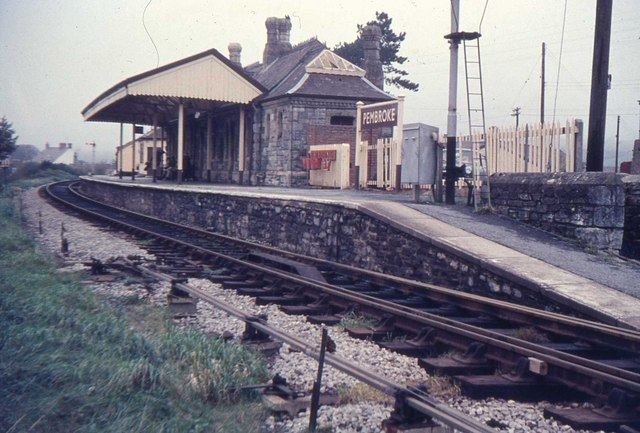Station code PMB DfT category F1 Number of platforms 1 | Grid reference SM991011 2011/12 31,622 | |
 | ||
Address Pembroke SA71 4AD, United Kingdom Similar Johnston railway station, Lamphey railway station, Narberth railway station, Manorbier railway station, Penally railway station | ||
Pembroke railway station serves the town of Pembroke, Pembrokeshire, Wales.
Contents
History
Pembroke railway station was opened by the Pembroke and Tenby Railway as the initial terminus of a line that ran to Tenby on 30 July 1863. The station originally consisted of small wooden buildings, with a short 150-foot platform.
In 1864, an extension to the line reached the town of Pembroke Dock, making the station there the western terminus in place of Pembroke.
A more permanent station building was constructed later, built from dressed limestone with a slate roof and three ornamental chimneys. The building contained five rooms; the Station Master's office, a parcels office, a booking office, a general waiting room and a ladies waiting room. Fully glazed canopies were added over the station entrance and platform in the early 1900s, following the takeover of Pembroke and Tenby Railway by the Great Western Railway.
A new shelter was built in 1971, and the main limestone buildings were demolished. This new shelter was in turn was later replaced with a glass panelled shelter.
Services
The station is served every two hours (approximately) to/from Swansea via Carmarthen & Whitland on weekdays, with connections for the South Wales mainline available at Swansea. The Sunday service is limited in winter (4 trains each way), but more frequent in the summer months.
On summer Saturdays, the station is also used by Great Western Railway who provide two HSTs in each direction; two to London Paddington, one from London Paddington and one early morning HST starting its journey from Swansea. One through train in each direction is named The Pembroke Coast Express. This through service to London is expected to cease running following the introduction of new IEP rolling stock in 2018 due to additional gauge clearance work along the route which would be required for 26m carriages to operate.
